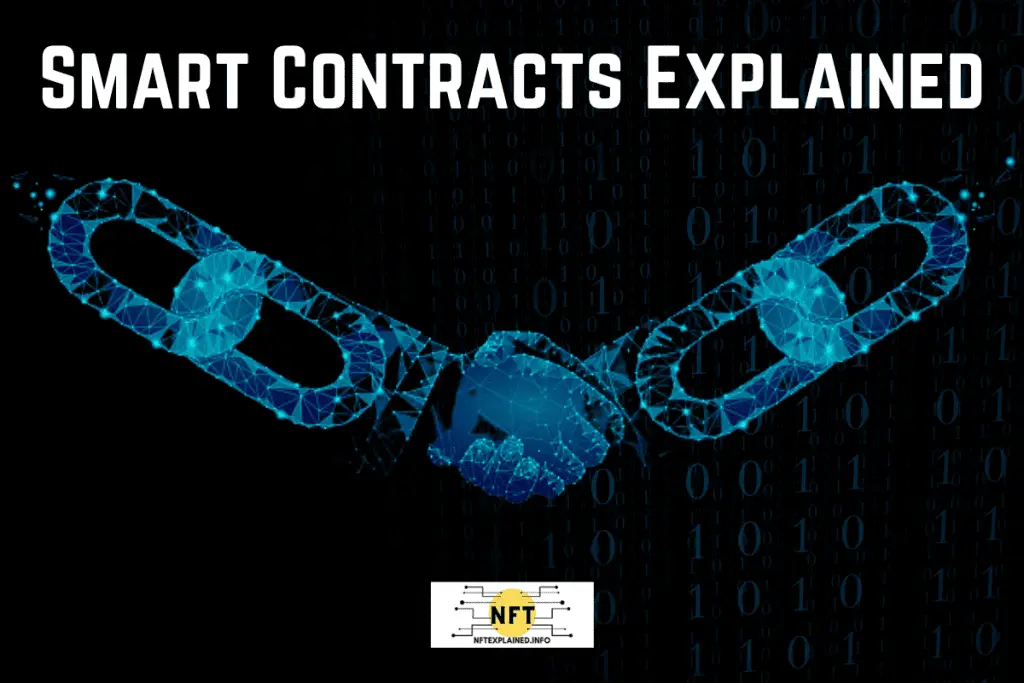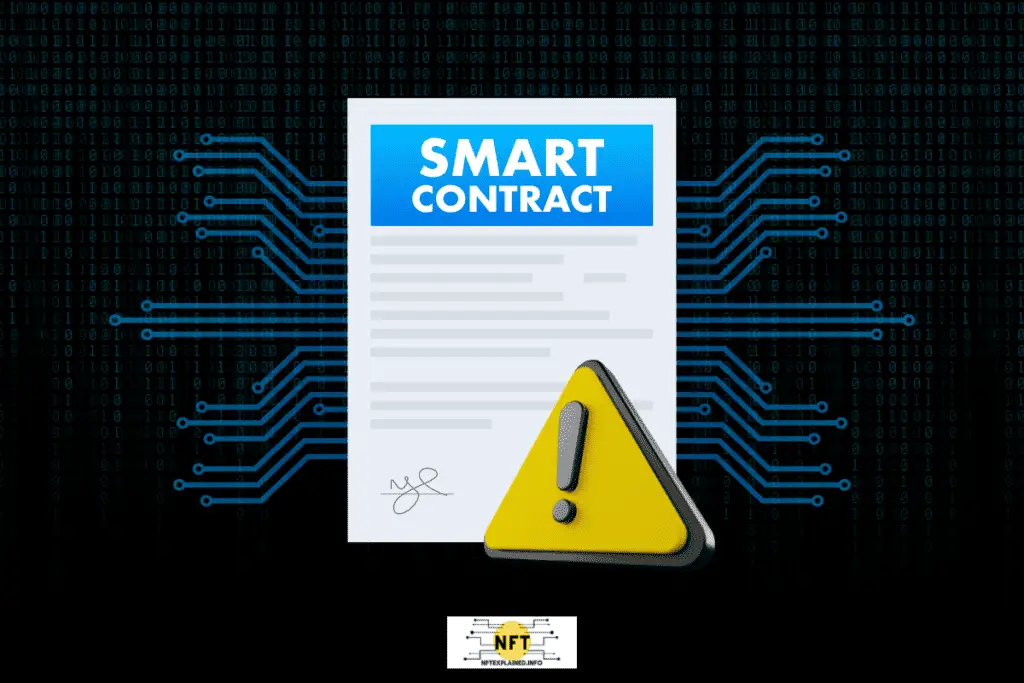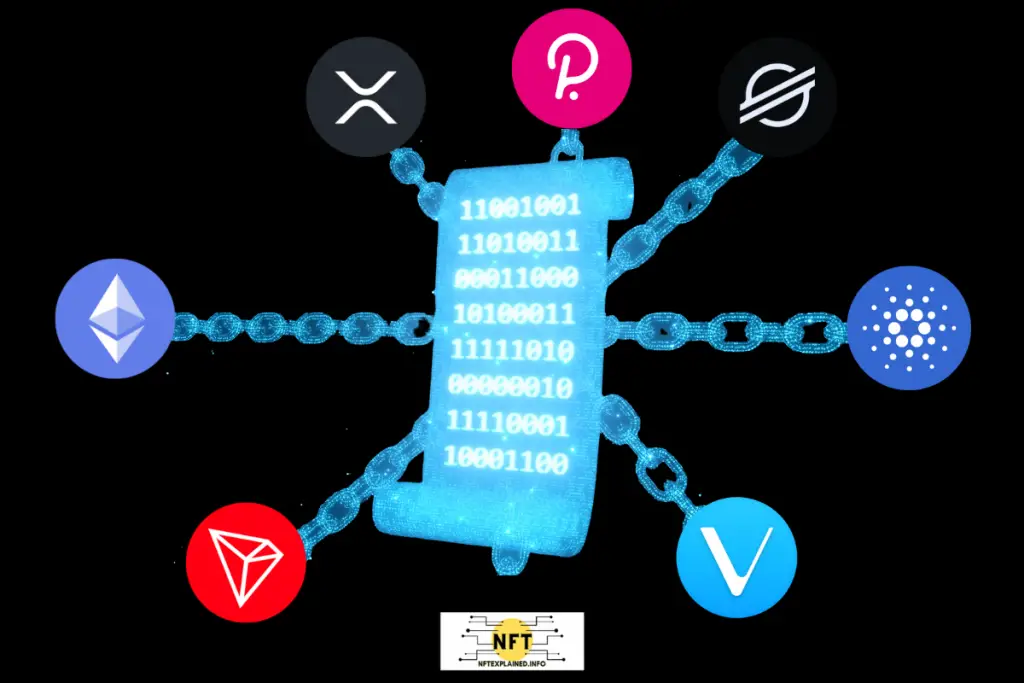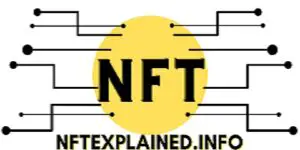
In my perspective, smart contracts stand out as the most groundbreaking and impactful application of blockchain technology to date; I highly recommend you read the entirety of this article to learn about this unparalleled innovation that has the potential to disrupt numerous industries.
Smart contracts are digital contracts that are written using blockchain specific code; they have predefined requirements that must be met before transactions execute as they operate on “if-then” principles. This removes the need for third party intermediaries and enables peer-to-peer transactions.
Overall, smart contracts are similar to contracts in the real world – however, they are digital and have the innate ability to remove a third party intermediary. By leveraging blockchain technology an array of benefits are delivered, which I will get into later. Also, I’ll explain the potential downsides towards the end of this article.
First and foremost, due to the transparent nature of the blockchain, every transaction can be readily examined in real-time. This allows individuals to easily monitor the parties involved, such as observing wallet 0x673gJ7… sending 1 BTC to wallet 0xH7k58T….
This holds true for smart contracts as well, as the underlying code or predefined conditions are openly accessible for all parties to scrutinize. While comprehending blockchain-based code may require some level of expertise, this accessibility guarantees that all involved parties can closely monitor the predetermined requirements and real-time actions taking place.
Moreover, the “if-then” principles inherent in smart contracts eliminate the need for third party intermediaries. If any of the predetermined conditions within the smart contract are not met, the transaction will not be executed on the blockchain, and it will be as if the transaction never occurred. In the subsequent sections, I will present concrete examples that highlight the diverse applications of smart contracts.
Before delving into examples, let us explore the origins of smart contracts. The concept of smart contracts was initially introduced by Nick Szabo, an esteemed computer scientist renowned for his groundbreaking work in digital contracts and currencies. Mr. Szabo holds a computer science degree from the University of Washington, which he obtained in 1989, and a law degree from George Washington University Law School.
One of his notable contributions is the development of ‘bit gold,’ a decentralized mechanism for digital currencies. Although ‘bit gold’ was never fully implemented, its influence on the creation of Bitcoin is widely acknowledged. It is believed that the ideas and principles behind ‘bit gold’ directly influenced the conceptualization and design of Bitcoin.
Smart Contracts in Action: Their Uses From Finance to Supply Chains
Smart contracts have almost limitless potential. They can revolutionize bond issuance by eliminating clearinghouses and automating coupon payments. In the realm of NFTs, smart contracts can ensure creators receive royalties from secondary sales, enabling creators to benefit from the increased value of their creations.
Before I explain more intricate examples, let’s establish a conceptual framework to understand the workings of smart contracts. Think of smart contracts as akin to vending machines, where transactions occur only when specific conditions are met—such as inserting two dollars or successfully using a card.
If these predefined requirements aren’t fulfilled, like when only one dollar is deposited, the vending machine automatically returns the amount and doesn’t dispense a product. The result is as if nothing ever happened and the same is true when smart contract requirements are not met.
Returning to the bond issuance scenario, the smart contract would encompass vital details such as yield, coupon rate, and maturity date – which would be viewable to everyone on the blockchain.
Employing “if-then” logic, the contract stipulates that if the principal amount is paid by the specified date, then your blockchain wallet will seamlessly receive periodic coupon payments. Upon maturity, assuming no terms and conditions have been breached, the principal amount will be automatically returned to the original holder’s wallet. All of this would be encoded into the smart contract and executed without the need for a clearinghouse.
Smart contracts play a vital role in the seamless creation, ownership, and transfer of NFTs. When using user-friendly NFT marketplaces like OpenSea, individuals without coding expertise can easily list their NFTs for sale. For instance, a seller can set a price of 0.05 ETH, and OpenSea automatically generates the smart contract that facilitates the transfer of the NFT to the buyer once the seller receives that specified amount.
Moreover, OpenSea empowers creators to establish royalties through the use of smart contracts, ensuring they receive a percentage of the proceeds when their item is resold on a secondary market. These smart contract functionalities are done without the need for coding knowledge and simplify the process for users.
The opportunity for royalties is something that physical art lacks the capability to deliver. This addresses the historical issue of immensely talented artists and musicians tragically passing away without reaping the financial rewards of their later renowned creations. With smart contracts, artists – but more specifically their family – can now potentially benefit from the long-term value and success of their digital art.
With regards to supply chain management, smart contracts can play a crucial role in automating inventory procurement based on predefined thresholds. This process, however, may require the integration of oracles or real-world data sources, which involves technical expertise and is beyond the scope of this article.
Another example in the supply chain industry is the use of unique identifiers like QR codes or RFID tags which track and authenticate products. Aside from utilizing smart contracts when these goods are transferred to prove ownership, the smart contract could be programmed to automatically pay the involved delivery party once the product has reached its intended location.
By leveraging these advanced smart contract capabilities, businesses can streamline aspects like their inventory management processes and improve overall supply chain efficiency.
The examples I shared offer just a glimpse into the immense potential of smart contracts and their impact across various industries. These illustrations serve to demonstrate why I believe that smart contracts currently represent the pinnacle of blockchain innovation at this point in time. However, it is crucial to approach innovation with a discerning mindset, as smart contracts are not without their challenges.
Smart Contract Challenges and Limitations: Exploring the Downsides

Smart contracts face challenges due to their immutable code, leaving no room for human error with regard to the blockchain based code they are created with, as it can result in irreversible consequences. User knowledge is another concern, as understanding the code requires technical expertise.
It’s important to exercise caution, conduct thorough testing, and improve user interfaces for wider smart contract adoption; however, there’s no doubt that smart contracts provide a glimpse into the future potential for automated execution of contracts.
Smart contracts’ immutability presents a double-edged sword, as it’s advantageous when the code is written correctly, preventing any party from tampering with it for personal gain.
However, this same immutability becomes a challenge when errors or vulnerabilities are present in the code, as they cannot be easily rectified. It highlights the importance of careful development, thorough auditing, and robust security measures in smart contract implementation.
Another significant challenge associated with smart contracts is the requirement for technical expertise to deploy and manage them effectively. Developing smart contracts often involves hiring specialized skills in programming languages like Solidity for the Ethereum blockchain, which can be costly.
Additionally, the gas fees incurred during transaction processing on the blockchain pose a hurdle. However, it’s important to note that these fees are inherent to the blockchain’s security model and are a known trade-off given the benefits of operating on a decentralized ledger.
Overall, I am optimistic that these challenges will be progressively mitigated as the technology continues to advance. One promising development is the emergence of user-friendly interfaces, such as OpenSea, that facilitate smart contract deployment without the need for coding expertise.
Another notable example of this trend is MetaMask, a user-friendly interface that seamlessly connects users with smart contracts. With MetaMask, individuals can effortlessly swap one cryptocurrency for another, leveraging the smart contract functionality to find the best exchange rate and gas fee. The interface abstracts away the complexities of coding, making it accessible and intuitive for users without any coding knowledge.
As this trend expands to other smart contract deployment platforms, we can anticipate a more accessible and user-friendly experience for individuals and businesses.
To conclude this article, I will examine some smart contract platforms. Again, I am in no way providing any financial advice or advice in general – always complete your own due diligence.
Exploring Popular Smart Contract Blockchain Platforms

Popular smart contract platforms include Ethereum, Cardano, VeChain, Ripple, Stellar Lumens, Tron, and more. When selecting a smart contract platform to build atop of, consider factors like scalability, developer community, and ecosystem support to inform your decision-making.
Ethereum: Ethereum stands out as the leading smart contract platform, powered by the Solidity programming language. Its backbone is the Ethereum Virtual Machine (EVM), a robust software infrastructure that is responsible for executing the bytecode of smart contracts, performing computations, and managing the state of the Ethereum network.
The Ethereum blockchain facilitates various smart contract standards like ERC20 and ERC721. Diverse projects leverage Ethereum’s capabilities to build decentralized applications (dApps) and NFTs games which utilize smart contracts. In fact, many projects are built atop Ethereum for this reason – including prominent projects like Chainlink and the DAI stablecoin.
Cardano: Cardano, founded by Charles Hoskinson, a co-founder of Ethereum, aims to address scalability, smart contract security, and traditional financial system challenges. Launched in 2017, Cardano is built with a focus on improving these aspects.
Marlowe, an assistive program, enables non-technical users to create smart contracts, contributing to scalability. Cardano’s native cryptocurrency, ADA, is positioned as a “third-generation” blockchain, distinguishing itself from Ethereum, often referred to as “second generation.”
VeChain: VeChain (VET) was founded by Sunny Lu in 2015 and now boasts a team of over 90 employees. Initially launched on the Ethereum blockchain, VeChain later transitioned to its own blockchain to accommodate its growth.
Often dubbed as ‘the Ethereum for business,’ VeChain places a strong emphasis on smart contracts for supply chain management, including product tracking and inventory management. The platform has formed partnerships with renowned companies such as BMW and Walmart China, aiming to revolutionize supply chain operations through technological advancements. With a focus on mass business adoption, VeChain prioritizes supply chain smart contracts.
Ripple: Ripple (XRP), engineered by Jed McCaleb, David Schwartz, and Arthur Britto, aims to revolutionize cross-border money transfers, prioritizing affordability and speed.
Ripple’s team collaborates closely with banks and institutions to understand and enhance the transfer process. With Ripple’s smart contract solution, Codius, even non-technical users can create contracts that interact with various services.
Codius supports rule-writing in any programming language and facilitates communication with external services that require secure and verified instructions. It also enables smart contracts to seamlessly interact with various networks and online services by keeping untrusted code separate from the main network. This separation ensures smooth communication and enhances the versatility and power of smart contracts.
Stellar Lumens: Stellar Lumens (XLM) was created by Jed McCaleb and Joyce Kim, and it delivers several compelling features as a smart contract platform.
One key feature of XLM is its support for multi-signatures, allowing multiple parties to agree on a smart contract through their signatures. The Stellar Network also utilizes batching, enabling multiple operations to be executed in a single transaction.
Additionally, Stellar Lumens provides the ability to use sequences – rather than simultaneous execution – allowing smart contracts to specify the order in which a series of transactions should be processed. If the transactions are not completed in the specified order, they will not be processed.
Time bounds can also be embedded in smart contracts, imposing limits on when specific tasks must be completed. If the specified time frame expires, the smart contract will not be processed.
Tron: Tron (TRX) was founded in 2017 by Justin Sun, an influential figure in China who was personally chosen by Jack Ma, the founder of Alibaba, to attend his prestigious Jack Ma Hupan University. This association highlights Sun’s reputation and connection to the business world.
Smart contracts on TRON have some advantages. They can be combined with other smart contracts to do even more things. It’s like using different apps on your phone to make something new and useful. One of the reasons Tron is popular is due to its low transaction fees, which make it accessible to a large number of users.
Again, when deciding on the blockchain to deploy your smart contract, it is crucial to carefully consider a range of factors, including security and developer support. These factors play a vital role in ensuring the success and effectiveness of your smart contract deployment.
I hope you found this article informative and continue to stay informed with NFT Explained. You can find us on YouTube, Instagram, Twitter & TikTok.
If you found value in our content or wish to support our educational mission, you can collaborate with our partners by utilizing these affiliate links: Purchase a Ledger hardware wallet!
